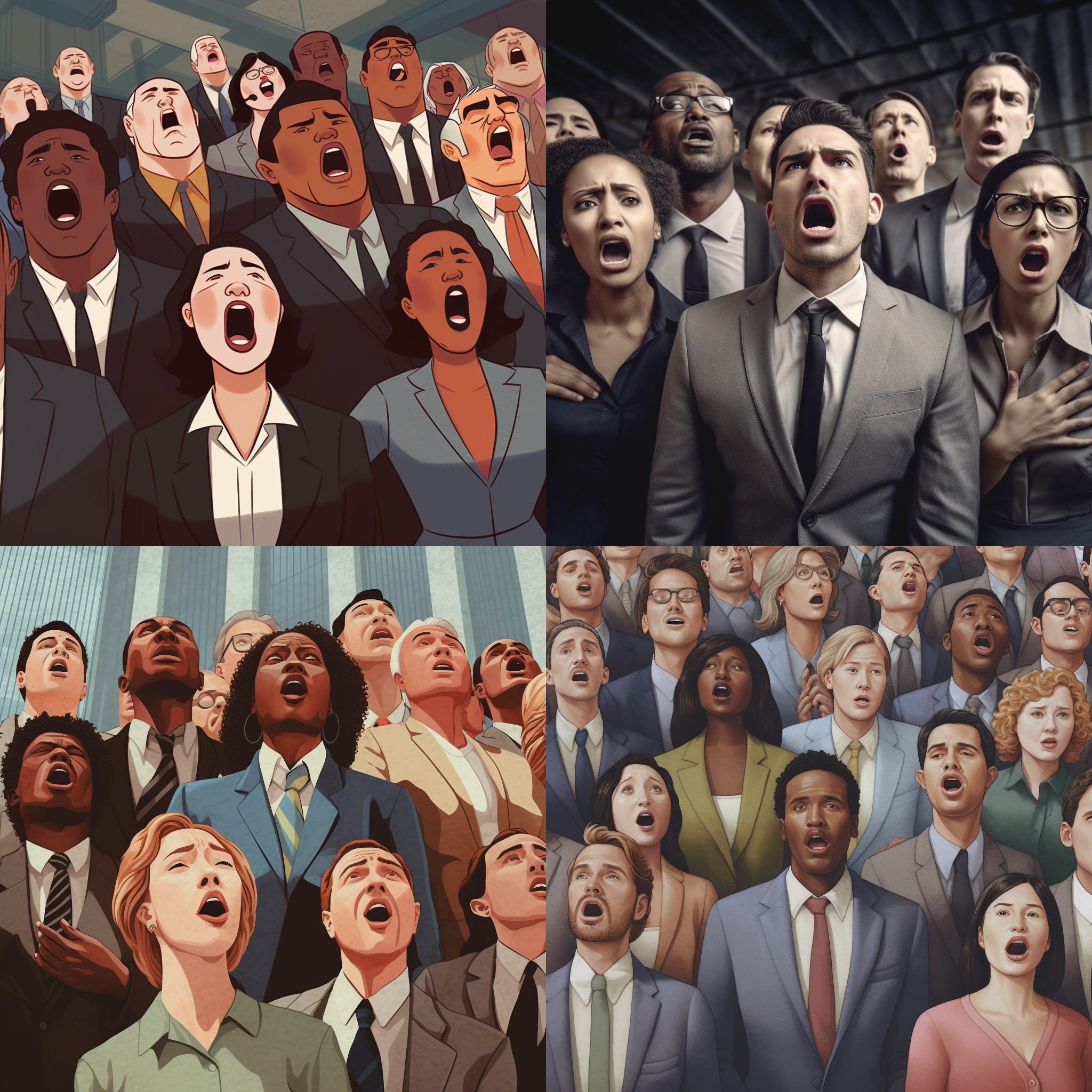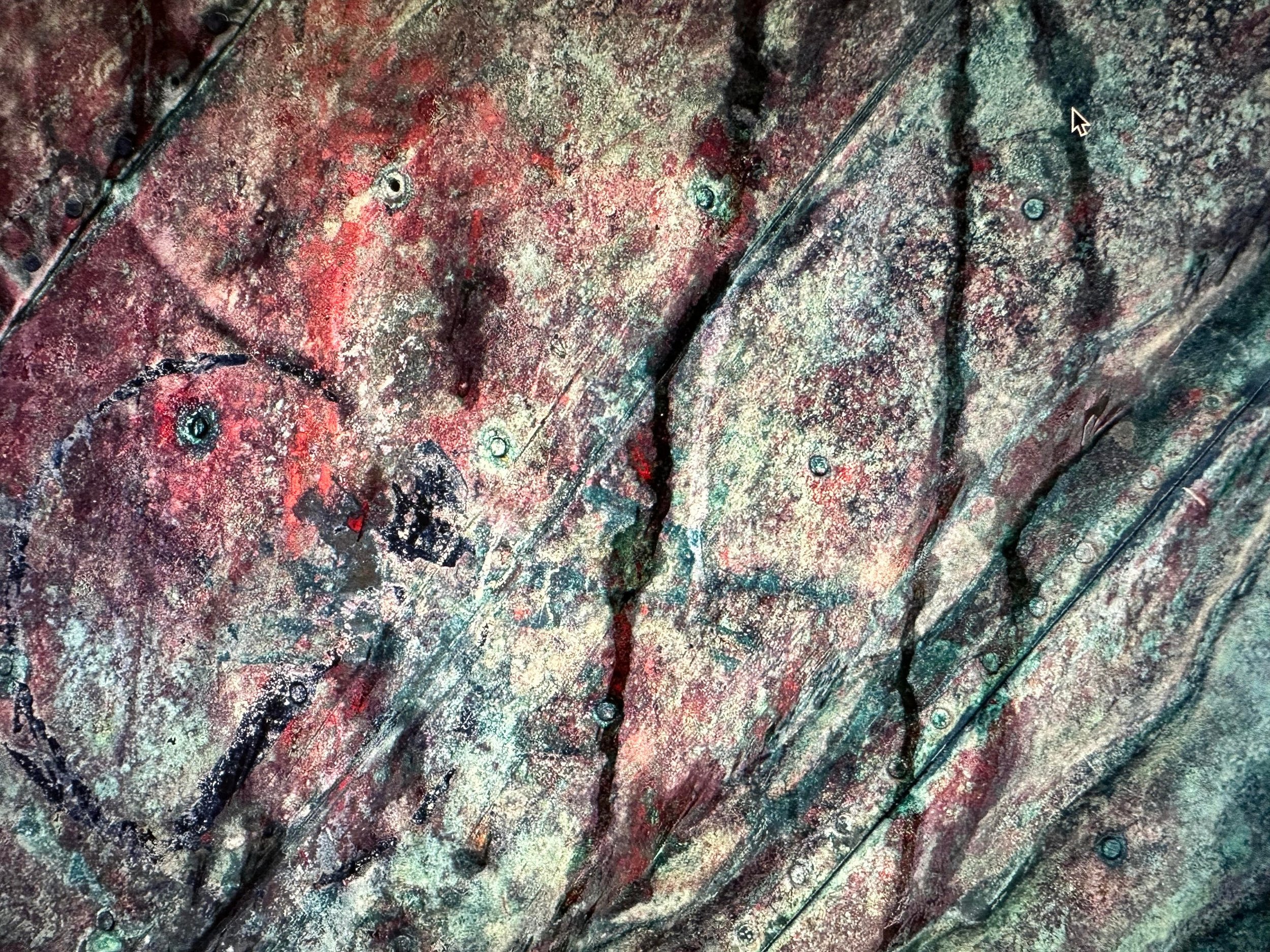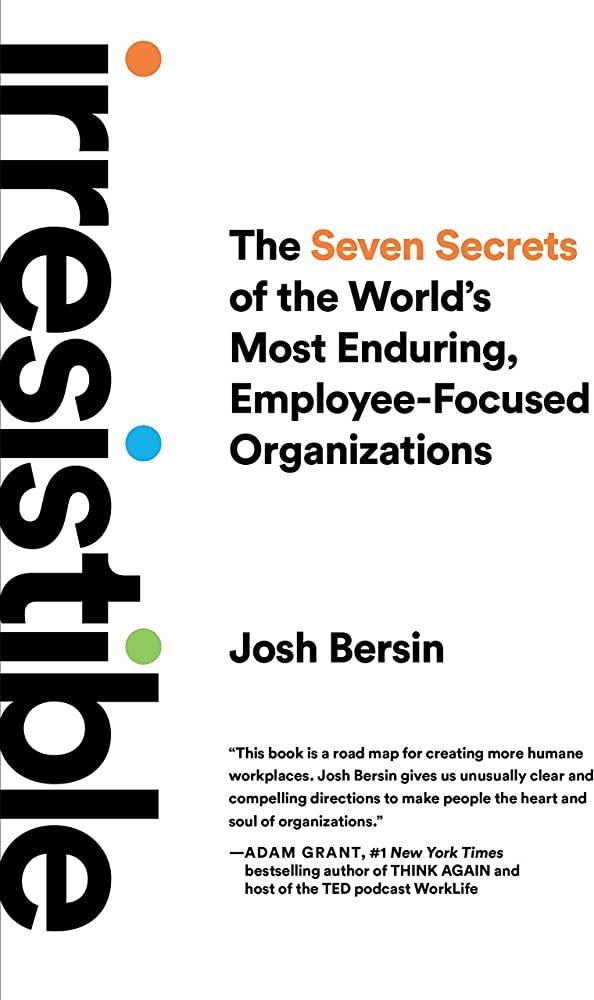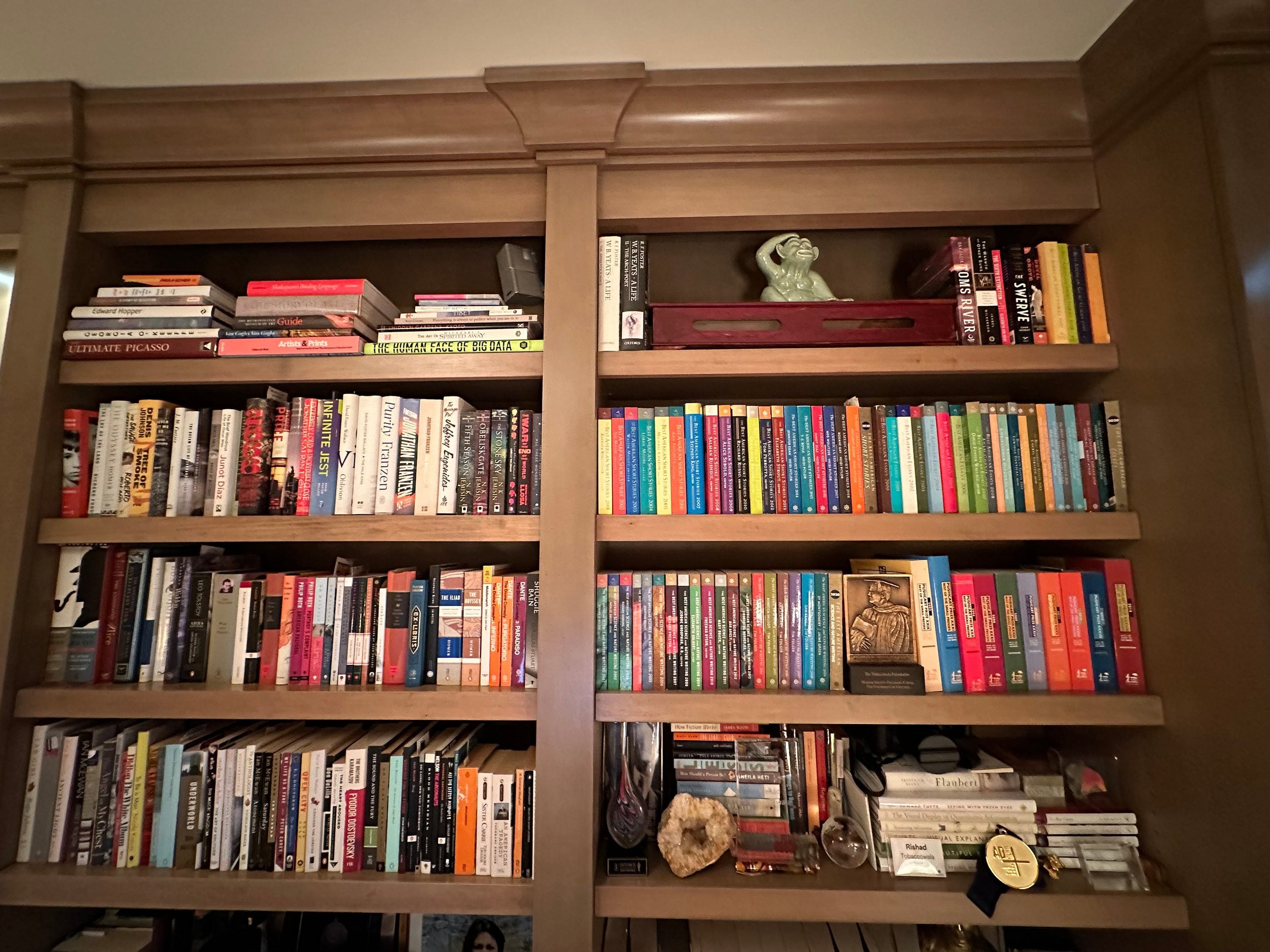Lamentations of the Modern Manager.
Worked so hard for this corner office with a view.
This wonderfully awe-inspiring room.
But instead of enjoying my due.
Have the same square footage as everyone else on Zoom.
As a manager we would monitor and check-in.
Now with everyone working anywhere that is in the dust bin.
Worked my way up the ladder as I grew grayer.
But now everybody wants to “de-layer”!
All these young folks are now so entitled.
They refuse to bend their knee to our high title.
Even worse than being in awe of us they boo!
Asking what value, we add and exactly do?
They would rather be their own boss.
And look at the decades we put in as a loss.
A deaf ear to our beliefs that expertise, craft and skill are like fine wine.
Which get honed and grow working with people over time.
Things were clear cut and everything in its place.
Now everything is fluid, as if we are drifting in space.
Everything is leaking into everything and exploding everywhere.
Commerce and media, offline and online, and only attention is rare.
Just when one came to grips with all this digital stuff.
Our knowledge of Web3 and AI we need to shine and buff.
All the information and data on pay and other secrets only we knew.
Now on Fishbowl, Glassdoor and LinkedIn are freely shared in full view.
We need to balance a world of hybrid and remote.
Cannot be a boss but a coach and on talent dote.
Align with DEI and ESG while being sensitive to taking a political side.
Should we fail to deliver the market will have our hide.
Managing used to be quite a sweet gig.
Delegated work as paychecks grew big.
But now to remain relevant we must constantly learn.
And many old tricks and processes we need to burn.
Boards announce big audacious goals.
Press releases sparkle with promises and roar.
But it is us who need to be great at our roles.
Otherwise, the stock will droop, and we will be out the door.
Now the challenges come from far and near.
One wrong move and there goes all the sales of beer.
How does one navigate and steer?
When there is so much that we must fear?
We must improvise and be agile.
Constantly adjust to a world that is volatile.
Yet our deliverables increase and thicken.
While deadlines and timetables we are given grow short and quicken.
We are the glue that connects the firm.
So why is everyone making us squirm?
They take us for granted and rare is the pay hike.
Maybe we should go on strike?
But if we do, will they go all Elon Musk?
Mow down everything leaving just husk?
Or will they transfer funds to Open AI?
Use GPT and Dall-e and wish us goodbye?
These questions linger and add to our stress.
Even though it is us who they need to clean their mess.
We need to stay stoic, brave and maintain a stiff upper lip.
And to continue to bravely captain the ship!
The Magic of Tech / The Complexity of Humans.
Technology is a form of magic that despite its downsides create more opportunities for more people and has done so on an ongoing basis.
In 2013 researchers at Oxford University predicted that modern computational technology including large language models would put 47% of all jobs at risk.
10 years later globally we have the lowest unemployment in decades with world-wide GDP and per capita income higher than ever.
Jobs lost. Jobs gained. But all jobs will be changed.
Modern computational and communication technology from mobility to the Internet has changed all jobs. Most of them significantly because of new ways to discover data, increase efficiency, attract new employees and talent, find new suppliers, and means of production or accept payments.
There are three big benefits new technology brings.
a) Efficiency usually through time and or cost savings: It saves time by automating tasks that are often mindless or requires going through large amounts of data. Often because automation can do more faster it saves money.
b) Effectiveness by doing things better or doing things that were impossible: Adobe Suit of tools allows for manipulation of images and video that were impossible. Modern special effects enables creating movies like Star Wars and Avatar.
c) Enablement of “God like Power”: The most powerful technologies give human’s “God Like Power”. Mobile phones enabled billions to be connected to each other, entertainment, and information all the time for the fraction of what one long distance call used to cost.
Take the current when it serves.
From “Julius Caesar” by William Shakespeare:
"We at the height are ready to decline.
There is a tide in the affairs of men
Which, taken at the flood, leads on to fortune;
Omitted, all the voyage of their life
Is bound in shallows and in miseries.
On such a full sea are we now afloat,
And we must take the current when it serves,
Or lose our ventures."
If an individual or business does not wish to be more efficient, effective, and enabled and turns down the benefits of the new technology they are likely to be an individual who is less relevant, less successful, and likely to be out of a job.
There is no choice but to utilize the technology.
Technology has always enabled both the math/analytical/left brain part of work and the magic/creative/right brain part of work.
Excel made finance easier, and Word made writing easier.
PDF’s made publishing easier, and Adobe Photoshop made design easier.
Today GPT allows efficiency in telemarketing centers where AI assists in answering questions while Mid-Journey and Runway ML creates amazing new options for creativity.
A case can be made that jobs will be changed so much that we will be working at many jobs and the future is about work and not jobs.
The choice is in how one uses the technology.
To that end successful individuals and companies use different criteria to decide how much technology to use and where to use it and the most successful will marry the magic of tech with the mystery of humanity to differentiate, innovate and turbo-charge talent.
1) Differentiation: Over time most technologies become commoditized or are available to most businesses for an affordable price. Thus, while using the technology keeps one competitive there is more that is needed to be differentiated. It is differentiation that enables a company to gain market share or charge a higher price.
If two companies were competing and both fully automated their process there would be no difference between their products and services driving them to commodity pricing. A large part of the differentiation between firms is driven by the ideas, storytelling and creativity brought by the different talent to differentiate their company.
While Delta and American use the same technology (aircraft) and resources (airports), and operate under the same rules and regulations (FAA), Delta has been consistently higher rated and more profitable than American because of its talent and culture.
Apple uses production lines at FoxConn which many of their competitors also use and most of the raw materials are similar or purchased from competitors (screens from Samsung or LG) but it is design and branding and storytelling that allows Apple to become the most valuable company in the world.
Most marketing services companies like advertising and media agencies of a given size have access to exactly the same platforms and technology but they differentiate via focus (what they specialize in so they can build unique knowledge, data, or IP), by how they work (how various teams come together to develop solutions) and by level of service or range of capabilities (ability to understand and respond to client needs) and the quality of talent and partners.
2) Innovation: Machines tend to learn and optimize based on pre-sets of learning data or pre-programmed algorithms which do adapt but are often unable to recognize if the landscape has changed either due to competition or new customer needs and so it requires humans to identify these changes and develop new ways to re-program and direct the machines in production.
Most modern technology is an aid to innovation but is not innovative itself.
It was not microscopes and gene-editing technology that enabled a Nobel Prize in Medicine or access to a Particle Collider and Supercomputer that discovers new particles but institutions and talent who challenge the status quo, imagine new answers, and break the mold.
If a machine can enhance the outcome by either doing it cheaper or faster or better it would be a competitive challenge for any company not to optimize and allocate more work to automation especially if the work is repetitive, boring and does not enhance or build skills.
However, most firms whether they are in the product or service sector will always have humans in the mix because it is the mix of computing of robots and the dreams of humans, the logic of data driven, digital silicon objects and the mysteries of feeling driven, analog carbon based humans where new products, services, ideas and creativity will thrive.
3) People and talent will grow more important and not less important: The jobs least impacted by AI are jobs where there is a need for interaction with a person. Some of these involve dentistry or delivery or restaurant service.
Increasingly people will look for people to talk to, guide them, or enhance their experience. Remember how irritated one gets when one cannot reach a human in customer service? Phone trees and automation while they save costs can enrage much more than they engage.
Time after time, many industries from the medical field to the teaching field have tried to create assembly line, industrialized, technology timed and monitored models and doctors have quit, the best teachers have become dispirited.
Employee joy is critical for service, idea, and innovation and if one finds less purpose, meaning or growth in a job it will hurt the product or service. If people are a cog in the machine, they will find ways to hobble the machine.
Martin Sorrell who runs S4 an advertising firm that buys media recently was asked if S4's adoption of AI “super tools” will threaten jobs at the company, Sorrel said: “Automation poses risks all round but we don't know what those will be. We don't know whether AI will be a net generator or net destroyer of jobs. But the algorithm will be more effective than a 25-year-old media buyer.”
Martin was right in not being sure about AI;s impact on jobs though history suggests it will end up creating more jobs than it will destroy. And, yes an algorithm can be more effective than a 25 year old media buyer but recently a Japanese company replaced its CEO with an AI so technology may also be coming for more senior roles like Martin Sorrel’s then someone who has grown up comfortable with technology. And the reality is that the 25 year old media buyer will still be key because she will be working with the algorithm, modifying the algorithm and augmenting the algorithm versus being eaten by the algorithm.
If a company can replace a person completely with an algorithm their Client does not need the service firm since they can just tap into the algorithm! Which many will do where they can so there has to be other value than replacing people with machines. And every company will be shouting about their “super tools” and it will be a cacophony of noise and and a sea of claims with little differentiation.
Also imagine if you are a young talent why would you join a company where your CEO is hungering to replace you as soon as they can? ( Never mind the fact that 76% of Gen-Z want to work for themselves so the shortage will be getting these talented people to stay on board versus optimizing them away).
The world of media increasingly has been automated with all sorts of advertising and marketing technology and this has allowed for optimization of media that humans alone could not do but the total number of people working in the field has increased and not decreased because the world is not a static place.
As soon as one optimizes a certain type of media there is new break throughs in communication whether it be voice or connected TV’s or gaming which requires new tools, techniques and ideas and a way to integrate across them all and infuse all this optimized media with ideas.
Service businesses involve humans and to be human is to often be unpredictable, incomplete, illogical, and incomprehensible and no machine will be able to do things alone because humans do not compute!
We often make no sense and in it is the wonderful complexity of humanity.
We choose with our hearts and use numbers to justify what we just did. All the AI’s are being optimized for intelligence which is IQ that might in conversation sound like EQ but they do not have a heart.
Combining the magic of tech while embracing the complexity of humanity is will be the key to thriving in a transforming world.
Irresistible!
Mid Journey. Prompt…Imagine what irresistible looks like?
Josh Bersin is a legend in the world of Human Resources and Talent.
His four decade long career has spanned all the twists and turns and ups and downs of a career from studying to be an engineer at Cornell and Stanford, earning an MBA from the Haas School of Business at University of California Berkeley to working for large companies such as IBM as well as smaller firms. Josh also has had the experience of being laid off which gave him the opportunity to began Bersin & Associates in 2001 an advisory firm focussed on corporate learning which expanded and grew and was bought by Deloitte in 2012. Josh spent 6 years at Deloitte before he began yet another career in launching the Josh Bersin Academy in 2019 to help develop HR and Learning professionals and in 2020 the Josh Bersin Company which today has 40 analysts and advisors who publish constantly, undertake research and help guide organizations through the transformations at work. And in Fall of 2022 he published Irresistible: The Seven Secrets of the Most Enduring Employee Focussed Organizations.
What Next in the World of Talent?
I was lucky to have Josh as my guest on the latest episode of my What Next? podcast and it is a conversation that everyone who is interested in the future of work whether you are a CEO, a Human Resources professional and most importantly talent navigating your career should listen to!
Some highlights include the following insights and statements and this is just a sampling:
Companies will become their employees rather than the employees becoming the company as the future of talent is crafting jobs around skills of the people versus fitting people into jobs.
Too much emphasis on measurement can lead to reduced productivity as people work to hit goals versus doing the right thing and many times the goals can be counterproductive and can lead to significant damage to a company like Wells Fargo employees opening fake accounts since they were compensated on how many accounts they opened.
Many organizations compensation and reward models as well as management styles are broken being stuck in a world where people moved up a hierarchy, worked full-time in an office, stayed at a company for many years. In today’s environment when skills rather than tenure, unbundled and distributed work and side gigs and side-hustles permeate and careers last much longer than most companies it is management that is failing to transform themselves from bosses to coaches.
Focussing on employee experience and culture is even more important than customer experience and investor relationships. We discuss the ups and downs at two world class firms Starbucks and Microsoft and what we can all learn from them. And how in a world of AI the best companies will be Human Services Companies.
A conversation with Josh Bersin:
Listen wherever you can access podcast from Apple to Spotify. Here is the Spotify Link.
It will change the way you manage and grow yourself, your teams and your business.
The Seven Secrets of the World’s Most Enduring Employee-Focussed Companies.
I have been reading and re-reading Josh’s latest book and have marked it up a lot since it is chock full of examples, methods, approaches and stories on the big shifts all of us have to undertake to attract, retain and grow talent.
Here are the Seven Secrets ( which are in one way no longer secrets since Josh has published and shared them) but they are secrets in that too many companies remain oblivious of them or rather so many of us have the answers can be in front of our faces but we choose not to see or after seeing them refuse to accept them.
Teams not Hierarchy: Josh defines teams as “a highly interdependent group of people that comes together in a physical or virtual setting to plan work, solve problems, make decisions and review progress toward a specified goal”. In a world of work that needs Jazz like improvisation and agility versus Classical hierarchy and bureaucracy the team is the key to the future of work.
Work not Jobs: In a world where people work all around the world, some part time and some full time and where companies are delayering and reducing levels the future is not jobs to fill but work that needs to get done. Companies have to re-architect around skills, outcomes and work versus titles, layers and jobs.
Coach not Boss: Leaders will build and guide people helping them unleash their inner talents rather than monitor, oversee and evaluate them. These days leaders focus on zone of influence versus zone of control.
Culture not Rules: Culture is often mistaken by many companies to be about a place. So many corporate campuses particularly the tech companies were more about inculcating cult like behavior rather than cultures. Josh Bersin reminds us that while culture does include the work environment it is not just physical place, but also an environmental and a virtual experience. And in addition there are four other components of culture which include well-being, inclusion, recognition/reward and flexibility (optionality, agency and freedom). Focussing only or mainly on physical space and believing the “office” is where its at is rather outmoded, outdated and outlandish given where we are going in the future.
Growth not Promotion: Companies should find ways to grow people so they can up-skill, re-skill and adapt and learn to fill future needs instead of constantly trying to find the right skills for the job today which will change tomorrow. As companies focus on flexibility, teams and getting work done there is a significant amount of de-layering underway. Compensation aligned with levels, tenure and how many people one commands or the size of budgets one oversees is increasingly mis-aligned with being effective, efficient and evolving in an increasingly accelerating and fluid world. Talent needs to grow and re-invent so companies can grow and re-invent.
Purpose not Profits: Companies that succeed behave like good citizens and ensure well-being of employees, alignment with society and openness and inclusion. These build deeper relationships with their customers and consumers, stronger attraction and retention of talent and a more resilient eco-system of relationships with communities and suppliers. Focussing on these right things ends up building competitive advantages which lead to profits. To win a game focus on the ball and not the scoreboard.
Employee Experience not Output: Talent will grow more important in the future and not less important. AI will require not just great talent but increasingly the ability to be more human and the future will be about Human Services Companies. Great results, brands and much more will not be possible without employee joy driven by great employee experiences.
Get the book. It will make you better.
And check out the articles and resources at Josh Bersin’s site. Its filled with amazing FREE content. It is a deep masterclass to help us improve.
Welcome to the Jazz Age!
Illustration by Leon Zernitsky
To remain relevant today leaders and companies who have often been classically trained need to realize we are in a jazz age and re-invent some of the ways we conduct ourselves and business.
Classical vs Jazz.
While both Classical and Jazz are highly complex styles of music which are held in high regard there are some key differences between them.
1. Fixed Hierarchy vs Rotating Leaders.
Classical music in many cases involves an orchestra or a multi-person assemblage which has a central leader known as the conductor. This hierarchy also cascades down into every instrument section with a first, second and third violinist or clarinetists.
Jazz ensembles sometimes have a leader but even when they do there is little hierarchy with different players often taking the lead.
2. Fidelity to a score or a“way” vs agility and improvisation.
Classical performances are traditionally based on pre-composed material, revitalizing scores from years past, whereas jazz is fresh with each performance with musicians extemporaneously re-composing in real time using improvisation.
Because most classical musicians and conductors follow a score often written hundreds of years ago there is limited flexibility to interpret in personal ways outside of playing faster/slower or quieter/ louder while accentuating certain passages.
Jazz music is often about improvisation with each rendering often very different from each other with the players having great degrees of freedom to iterate and invent on the fly as the spirit, the situation, and their fellow players move them.
3. Greater emphasis on the musician and individual in Jazz.
Since jazz tends to have fewer players who are improvising and who share leadership the talent of the individual is emphasized versus the scale of the collective in orchestras. There is more spotlight on individual talent versus large numbers of people who can be switched out for other people in large orchestra sections.
Illustration by Leon Zernitsky
Why increasingly companies and leaders need to be less classical and more jazz like.
Over the past decade or two the four shifts of demographic, mindset, technology and boundary shifts have re-written the business landscape. See The Four Shifts.
A) Size and Co-ordinated Movement of huge enterprises matters less as new types of technology and platforms from AI to Cloud Based Software as a Service ensure plummeting prices and access to cutting edge quality, scale of manufacturing and global marketplaces to small companies and individuals.
B) Speed and Agility has grown in importance where responsiveness and customization of products and services becomes a key differentiator. i
C) Flexible ways of working and managing grow in importance as four generations work together at the same time, work is now done at different locations, and cultural and individual differences must be incorporated into decision making.
When companies and leaders struggle to adapt it is often because they are organized or trained classically while the new landscape and expectations of the new generations are crying out for a jazz-oriented approach.
The good news is that many of the best jazz players were classically trained and some of the best classical music including Rhapsody in Blue (The United Airlines theme) or Dvorak’s 9th Symphony (New World) are infused with jazz like structures so there is nothing holding back today’s companies and leaders from adapting to tomorrow.
Illustration by Leon Zernitsky
Some Questions to Ponder
Is Hierarchy holding the company back? Are bosses followed due to their zone of control and title or are they leading via a zone of influence and updated skills? In some organizations such as the Armed Forces and others hierarchy is a feature and not a bug while in many others it is less relevant and so they have out of date conductors swinging a baton at an orchestra that is looking somewhere else.
Are companies re-thinking things with a blank sheet of paper versus replicating ways of operating that made sense when our companies were founded or made sense at a different time.? In this week’s What Next? podcast we hear about how productivity has been significantly improved at Shopify when CEO Toby Lutke recently had all meetings removed from everyone’s calendar and people had to decide whether they needed them and if they needed them as often, as long, with as many invitees or they could be done away with altogether. This is just one way that companies are re-architecting from ground up rather than making small adjustments that while easy to do have little impact.
Is there significant time and budget allocated to training talent to better self-manage or to help management adapt to lead better? The future of leadership is continuous learning, coaching, empowering people and delegating to more junior employees or employees closer to Clients and the business battle front so they can improvise as the situation calls for.
Illustration by Leon Zernitsky
The 4X4 Approach to thriving in the Jazz Age.
The recipe of success of Jazz Age companies and leadership will be to focus on a 4X4 approach.
Four of these are built around Talent and four are built around Rhythm so that talent plays well and can improvise with each other to create real value and growth.
The Talent Four: a) finding and honing the best talent, b) emphasizing teams/team work, c) investing in growing skills and d) encouraging improvisation.
Increasingly a combination of AI, access to global marketplaces, and other breakthroughs will reduce most moats that companies have created leaving talent as one of the key long-term moats along with other such as Brand.
Companies that attract superior talent, enable them to lear rapidly, communicate clearly and fearlessly while collaborating flexibly are likely to be the long term winners.
The Rhythm Four: Growing talent while key to companies and leadership alone will not be enough and a significant value of firms and leadership will be to set a a) strategy/vision, b) clear deliverables, c) evaluation metrics, and d) a methodology/language to improvise around to ensure that it is music and not cacophony that results from a more flexible and fluid approach.
Welcome to the Jazz Age!
On Reading.
Photo “ The Reader” by Alex Timmermans
Today’s Large Language Models (LLM’s) which drive AI advances like GPT learn and grow through “reading”.
They ingest large data sets and then connect dots, “see” patterns and create relationships while optimizing against learning goals.
“Reading” grows their capabilities which allow them to “write” their responses. We respond with shock or awe when we read what “they” write.
Writing and therefore being able to pass on knowledge from generation to generation and accessing such knowledge via reading is what has enabled humanity to grow.
Even today in a world of multi-media such as movies and games or wonderful Broadway works like “Hamilton” the key is the script and the story.
It has been said that “stories are data with a soul”
Today, GPT reads widely and then observes our reactions to help us grow (though like any reader who switches between genres they can move from non-fiction to highly speculative fantasy disconnected from reality!)
These days we hear people saying the machine is “hallucinating” but for us humans too “reading is a form of dreaming” which takes us out of ourselves.
The Case for Reading.
Reading allows us to be other people and a good writer makes us inhabit another character.
They make us better understand others and better understand ourselves.
David Foster Wallace wrote “ Good writing should help readers be less alone.”
Often a good book will give you “you” as the writer evokes what you feel better than you have the words to express the same thing..
It makes us less lonely and lets us live simultaneously in yesterday, today and tomorrow, and inhabit places here and there, becoming people that are free from our physical constraints.
“Writers have not taken us anywhere but they have taken us everywhere”
George Martin wrote “A reader lives a thousand lives before he dies . . . The man who never reads lives only one.”
Reading also changes us.
“The best books are like surgeons. They change you but you do not remember them and they do not leave an external mark.” but even then “A great piece of writing is one that you feel on your skin.”
“A story is simply a sequence of language that produces a chemical reaction in our bodies.”
But they have a unique long last effect because while “Drugs get flushed from our system but not the best stories.”
The Case for Books.
Today due to the Internet and enabling platforms from Substack to Wordpress everyone can access more voices from more places with more diverse backgrounds than ever before.
Some of the best reading is self-published and can be obtained far from the big publishing houses of the West.
Short form or long form. Listened to or in the reflected glow of a Kindle. Words by themselves or a piece of writing encrusted with links and multi-media can all transform.
But one great way but clearly not the only way to read is through an ancient “ interface” of a physical soft cover or hard cover book.
While it cannot illuminate itself allowing you to read under starlight or allow one to hold a thousand books in the palm of your hand there is something tangible, mystical and spiritual about a physical bound book.
The utter simplicity.
Black symbols on a white background which create an alchemy of feeling, unleash our imagination and spur growth in their own unique way distinct to each reader. Personalized magic that all modern tech seeks to replicate but has not yet.
They might one day if they learn from reading.
Less is more.
Life is infused with meaning because of the reality it ends.
Data is not wisdom.
Humans are unpredictable, inexhaustible and illogical .
One could do no better than watch Chip Kidd speak about the “thinginess of books” to make you newly appreciate these objects in which knowledge has passed down the centuries to intersect with us sometimes so powerfully that a book can leave us thinking “I must change my life!”
Many are lucky to own hundreds of books often decades old. Many yellowing. Most marked up with exclamation marks reinforcing the writer or quarrels with the author in angry scribbles in the margin.
Some tattooed with stains of spilled food or some mishap on a plane or train or other accelerating or braking vehicle from a journey in the misty past.
Artifacts encrusted with meaning.
Citadels to memories.
When we revisit them like many readers we wonder why we underlined the lines we did.
The book did not change.
We did.
“Life is a river and we cannot step into the same book twice”
Lots of things in life change us. Memorable experiences. Transformative relationships. Amazing people.
But the books we read impact us deeply too.
As a reader wrote “ Its only reading. By which I mean it’s everything”.





















